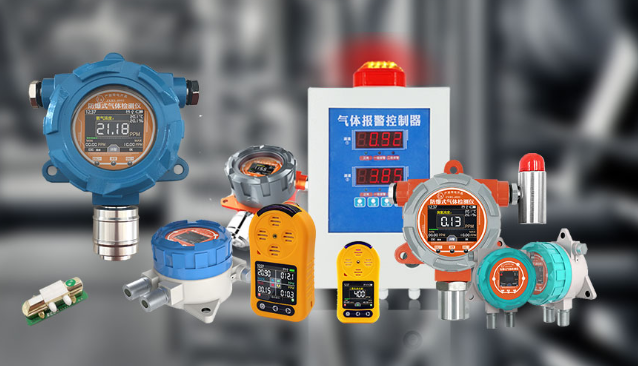
How do we know if a gas detector is working?
Gas detector is a kind of safety detection device. It is intended to be used to monitor and measure potentially deadly gases in workplaces and other places frequented by people.

Gas detector is a kind of safety detection device. It is intended to be used to monitor and measure potentially deadly gases in workplaces and other places frequented by people.
Gas detector is a kind of safety detection device. It is intended to be used to monitor and measure potentially deadly gases in workplaces and other places frequented by people. It helps protect life, safety, property and the environment. A working gas detector can be the difference between life and death. With such serious consequences, how do you know your stationary gas detector is working properly?

Incorrect Settings can cause the display to give incorrect readings and alarms, or more seriously, not to alarm when it should. Initial setup and calibration of equipment should be done by the manufacturer, distributor or trained technicians to ensure proper operation of equipment from installation.
How much do you know about this system? How confident are you that the system will work? Newly installed systems and/or sensors should be closely monitored for a period of time each week (or more frequently if necessary) until your expectations of their performance can be set with confidence. Maintain records of accurate readings and any maintenance required to establish a historical record that you can trace back to if required. If the equipment is installed in an inappropriate location, there may be airflow problems or interference from other gases or sensitivity problems, which can be corrected as soon as possible. Knowing how the system should respond and how it actually responds will help you quickly determine if it is not working properly.
Wear and tear on any equipment will affect its performance and reliability. Gas detection equipment should be checked regularly for accidental damage, intentional tampering, dirt, cracks, water damage, loose screws and wires, etc.
Monthly crash testing is strongly recommended, especially for applications involving more hazardous gases, for many people as well as any application prescribed by occupational health and safety standards. Crash testing involves flowing a target gas sample through the sensor and verifying that the sensor response is strong enough to activate the configured alarm condition. If the detector goes into an alert state when the target gas concentration is displayed slightly above the configured alarm set point, you know that the sensor will respond if there is a gas leak. If the crash test fails or the instrument does not perform as expected, a full calibration should be performed to determine whether the equipment is defective or simply needs to be adjusted.
The crash test only checks whether the detector responds, not the accuracy of the instrument. That's what calibration does. Most of the time, the fault is discovered during calibration or crash testing, meaning that somewhere between the calibration, something went wrong with the gas detector.
"How often should I calibrate?" Is one of the most frequently asked questions when using a gas detector. Calibration frequency depends on many factors, such as the type of gas detection system, how it is used, the accuracy of the system needed, the manufacturer's recommendations, application specific health and safety laws and regulations, whether suspected environmental conditions or potential damage, occur in the instrument may affect its performance, crash test whether belongs to a part of your regular maintenance plan, and so on. At a minimum, fixed gas detection systems in underground parking lots and refrigeration units should be calibrated annually. Such as swimming pools (chlorine), arenas (ammonia) and other applications which must meet occupational health and safety standards should be calibrated every 6 months or as required.
The calibration program uses a specific gas concentration to set a value that, if there is a leak, the detector will use to compare the concentration of the leaking gas. If the concentration of the leaking gas is higher than the set value of the calibration, the alarm will sound and, depending on the instrument function and configuration, the relay will activate other safety devices such as fans or other alarm devices.
Calibration takes longer and uses more gas than crash tests. However, calibrating the sensor against known gas standards is the only way to know if the detector will accurately respond to the gas it is designed to detect.